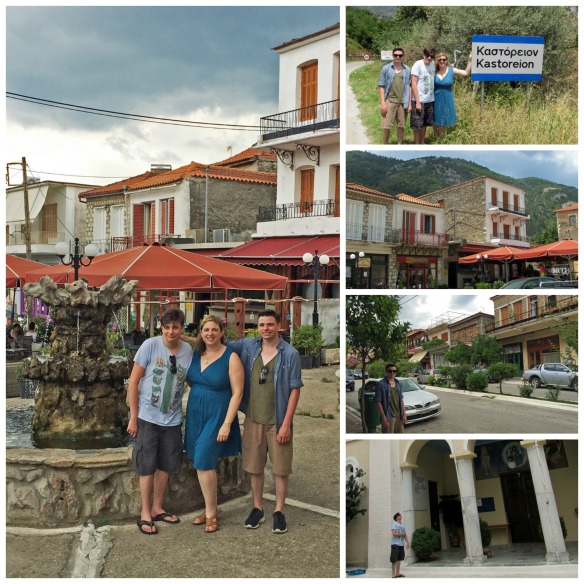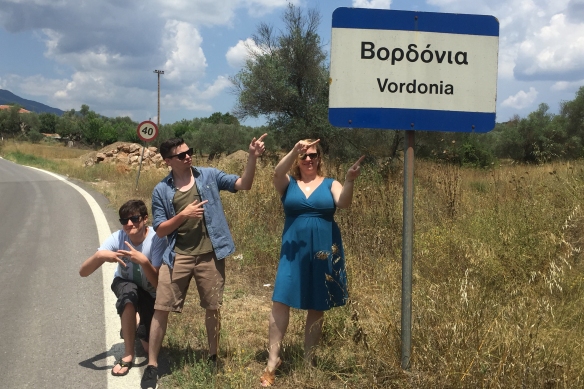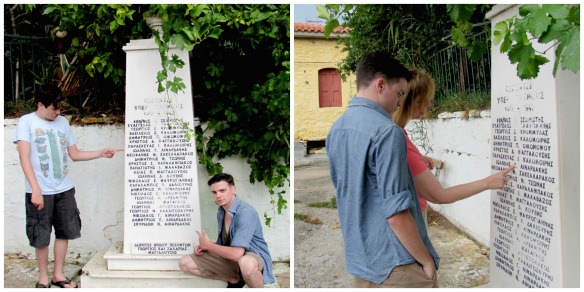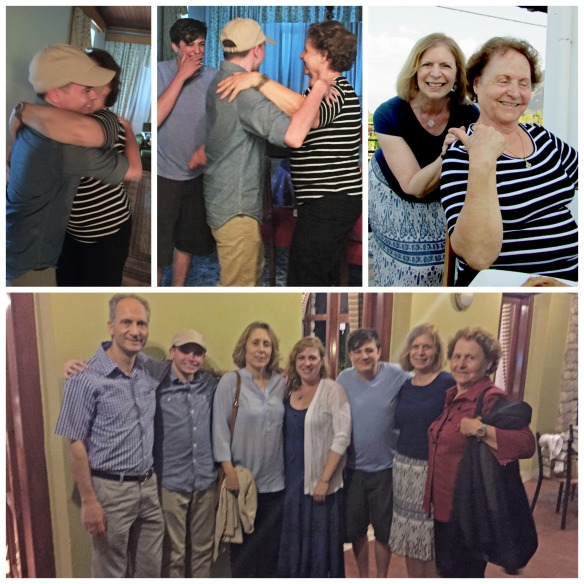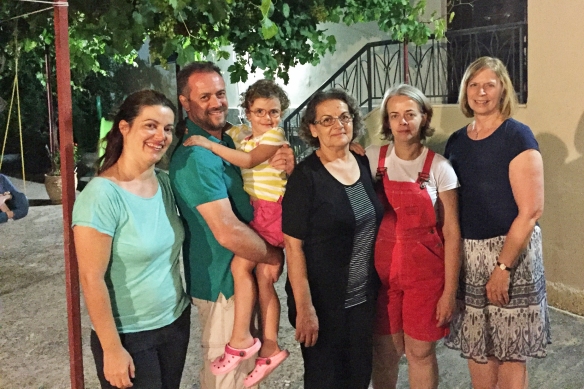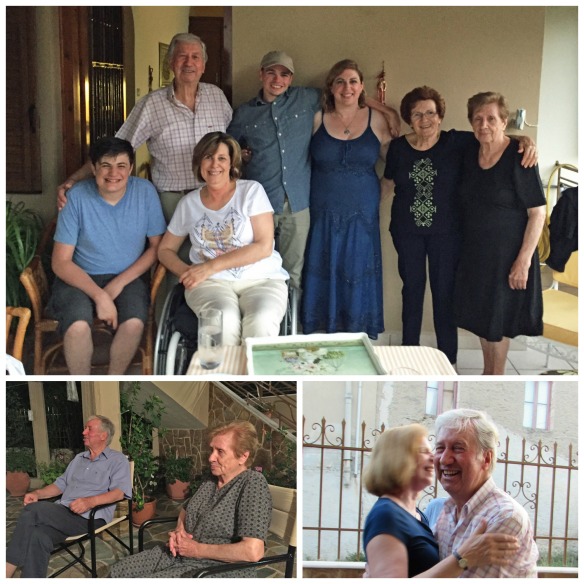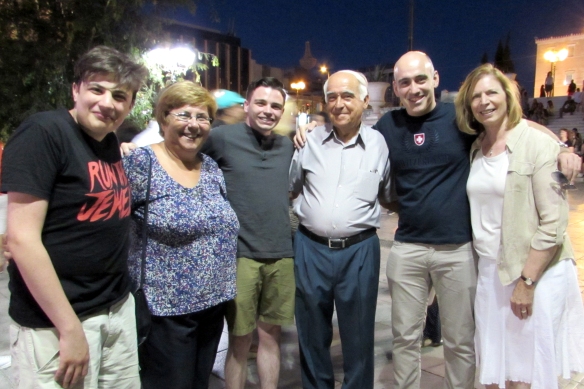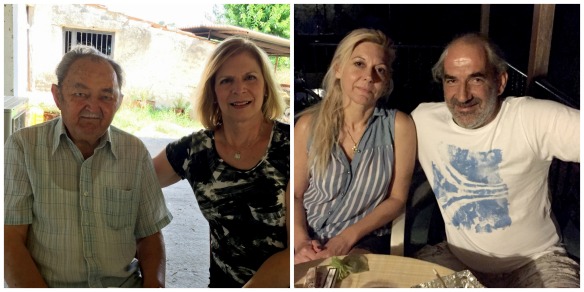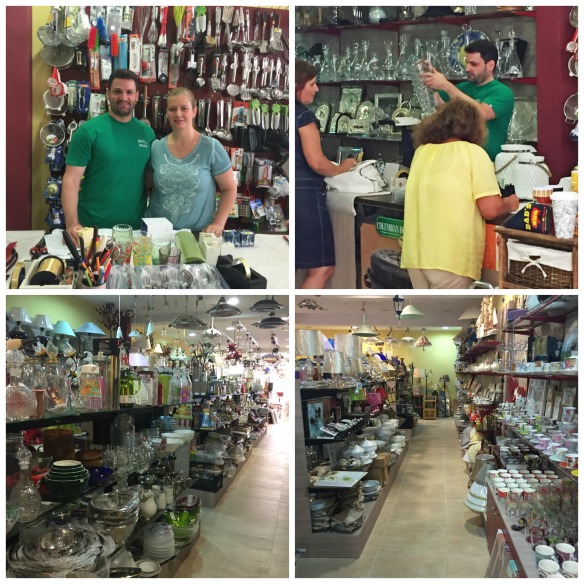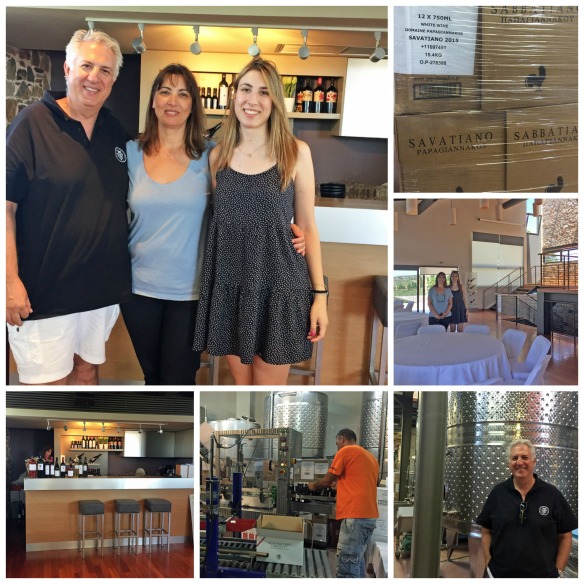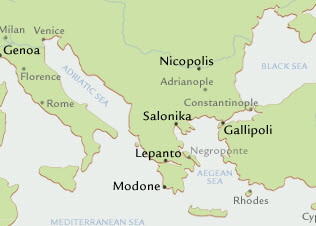Searching my Eftaxias family in Laconia is yielding some exciting results. My great-great grandfather, Ioannis Eftaxias1, was born in 1809 in Mystras. As far as can be determined, he is the oldest Eftaxias in Mystras. He had two sons listed in the 1872/1873 Election Rolls: my great-grandfather, Konstandinos2, (born 1840) and Georgios3 (born 1848).
Dimitrios Eftaxias4, born 1846 in Mystras, is also found in these Election Lists; however, his father is not named. It is very likely that Ioannis is his father, because Ioannis is the only male Eftaxias in Mystras who is of the age to be a father during that time period. I am hoping that the staff at the Archives office in Sparta will be able to resolve this by finding Dimitrios in the Male Register, which will list his father.
My friend, historian and teacher, Giannis Michalakakos, has found the name in two areas in Laconia: Mystras and Lagia (Mani). He said this name is rare and may be Byzantine in origin. It is likely that all Eftaxias from Laconia are blood-related. Giannis surmises that members of the Eftaxias family moved from Lagia north to Mystra after the 1821 Revolution, as this was a time of widespread migration throughout southern Greece. When the Ottoman occupation ended, families were free to move about, unmolested and unafraid. It was common for families to leave their hiding places in the forbidding mountains to find work in cities and farming opportunities in the fertile plains of Laconia.
A newly-found Eftaxias relative was told by his father that his family originated in Kalamata. Corroborating this, the map below reveals the route from Lagia through Kalamata to Mystras. Understanding migration patterns helps us move back through time.
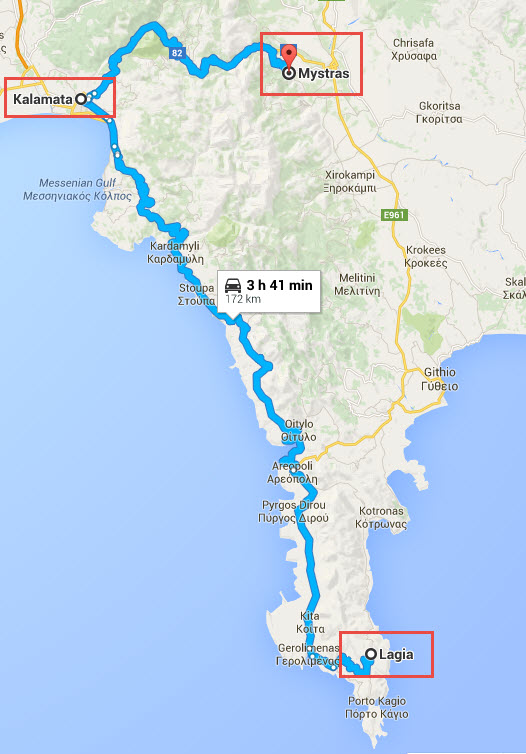 Giannis determined that the oldest Eftaxias in the village of Lagia is Mihalis Eftaxias, born about 1800. He fought in the 1821 Revolution. Mihalis had a son named Vrettos, and Vrettos had two sons: Michalis5 (born 1826) and Panagiotis6 (born in 1832).
Giannis determined that the oldest Eftaxias in the village of Lagia is Mihalis Eftaxias, born about 1800. He fought in the 1821 Revolution. Mihalis had a son named Vrettos, and Vrettos had two sons: Michalis5 (born 1826) and Panagiotis6 (born in 1832).
The Eftaxias name is found in Atatka, the first Modern Greek dictionary! The Atatka was compiled by Adamantios Korais, a Greek humanist scholar who played an influential role in the Greek Enlightenment, the 1821 Revolution, and in particular the development of the “purist” Greek language, Katharevousa. His monumental work, Atatka, is comprised of 17 volumes and was published in France in 1832.
Recently Giannis sent me an entry from page 147 of Volume One of Atakta, where the name “Eftaxias” appears.
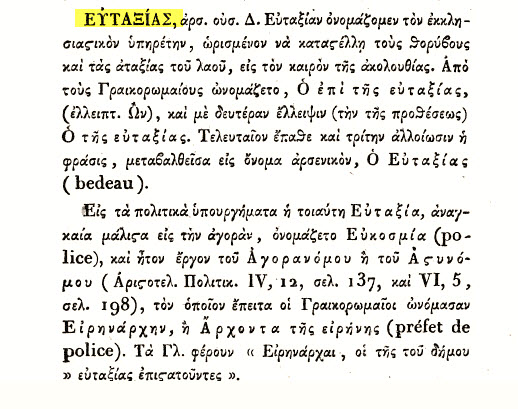
Page 147, “Eftaxias”
A rough translation reveals that Eftaxias is an ecclesiastical servant; one who keeps the order of the church. [From Gregory Kontos: Ευταξίας: good=ευ, order=τάξη]. He is the one that ensures there is orderliness among the people by preventing disorderly conduct, noise and mischief. There is reference in this document that Eftaxias was named “the Lord of peace.” This description gives me a most interesting insight into my ancestor who was first given (or adopted) this name.
Some families spell the name without an “i”: Eftaxas. Giannis explained that in the Maniate language, the name is pronounced Eftaxeas (accent on the 2nd e, and pronounced as a long e). The family is part of a Maniat clan (blood related families with different names) named Ksifomaheridianoi. Other branches of families from this clan are Kassimis, Royssakos, and Kapylorihos, all of whom remained in Lagia.
Along with clan affiliations, name changes pose real challenges. Most occur from either παρατσούκλι (paratsoúkli) which is a nickname; or creating a surname from a given name — males taking the given names of their fathers and adding -akos to indicate “son of.” Example: my surname, Kostakos, means “son of Kostas.” Thus, the original surname is lost. Reading through Election Rolls, I see this phenomenon on almost every page in Mani records. With the Eftaxias name having a distinct definition, there is no name change. Tracking down the “first” Eftaxias would be a fabulous find!
Sources:
1General Archives of Greece, Election Lists, 1843-44
File 22, Image 62, Line 239, Mystras
Ioannis Eftaxias, age 35, owns property; gardener; no father listed
2General Archives of Greece, Election Lists, 1872
File 25, Image 404, Line 573, Mystras
Konstandinos Eftaxias, age 32, shepherd; father: Ioannis
3General Archives of Greece, Election Lists, 1875
1872: File 25, Image 402, Line 480, Sparta-Mystras
Line 480 : Georgios Eftaxias, age 24, b.1848; occupation: student; father: not named
4General Archives of Greece, Election Lists, 1872
1872: File 25, Image 403, Line 506, Sparta-Mystras
Line 506: Dimitrios Eftaxias, age 26, occupation: shepherd; father: not named
5 General Archives of Greece, Election Lists, 1875
File 9, Image 99, Line 188, Lagia
Mihalis Eftaxias, age 49, farmer, father: Vrettos,
6 General Archives of Greece, Election Lists, 1875
File 9, Image 100, Line 237, Lagia
Panagiotis Eftaxias, age 43, farmer; father: Vrettos












